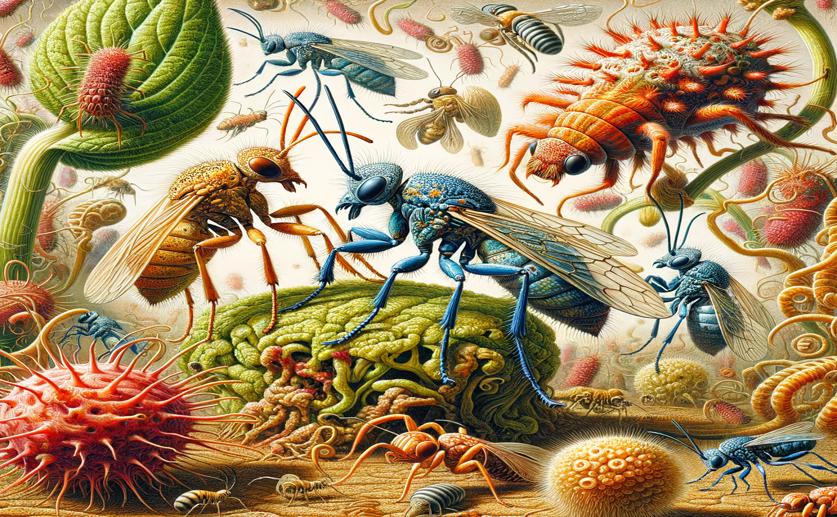
Natural Chemicals from Infected Insects for Controlling Harmful Plant Parasites
Jim Crocker
30th June, 2024

Image Source: Natural Science News, 2024
Key Findings
- Researchers at Nankai University found that VOCs from cadavers infected by certain nematodes can kill root-knot nematodes (RKNs)
- VOCs from Steinernema feltiae and S. carpocapsae were particularly effective in killing the juvenile stage of RKNs
- The compound DMDS, identified in the VOCs, not only killed RKNs but also stopped their eggs from hatching and reduced their invasion of tomato roots
References
Main Study
1) Volatile organic compounds released from entomopathogenic nematode-infected insect cadavers for the biocontrol of Meloidogyne incognita.
Published 29th June, 2024
https://doi.org/10.1002/ps.8268
Related Studies
2) Plant-Parasitic Nematodes and Food Security in Sub-Saharan Africa.
3) Top 10 plant-parasitic nematodes in molecular plant pathology.
4) Rhabdopeptides from Xenorhabdus budapestensis SN84 and Their Nematicidal Activities against Meloidogyne incognita.
5) Signal pathways involved in microbe-nematode interactions provide new insights into the biocontrol of plant-parasitic nematodes.



 16th January, 2024 | Jim Crocker
16th January, 2024 | Jim Crocker